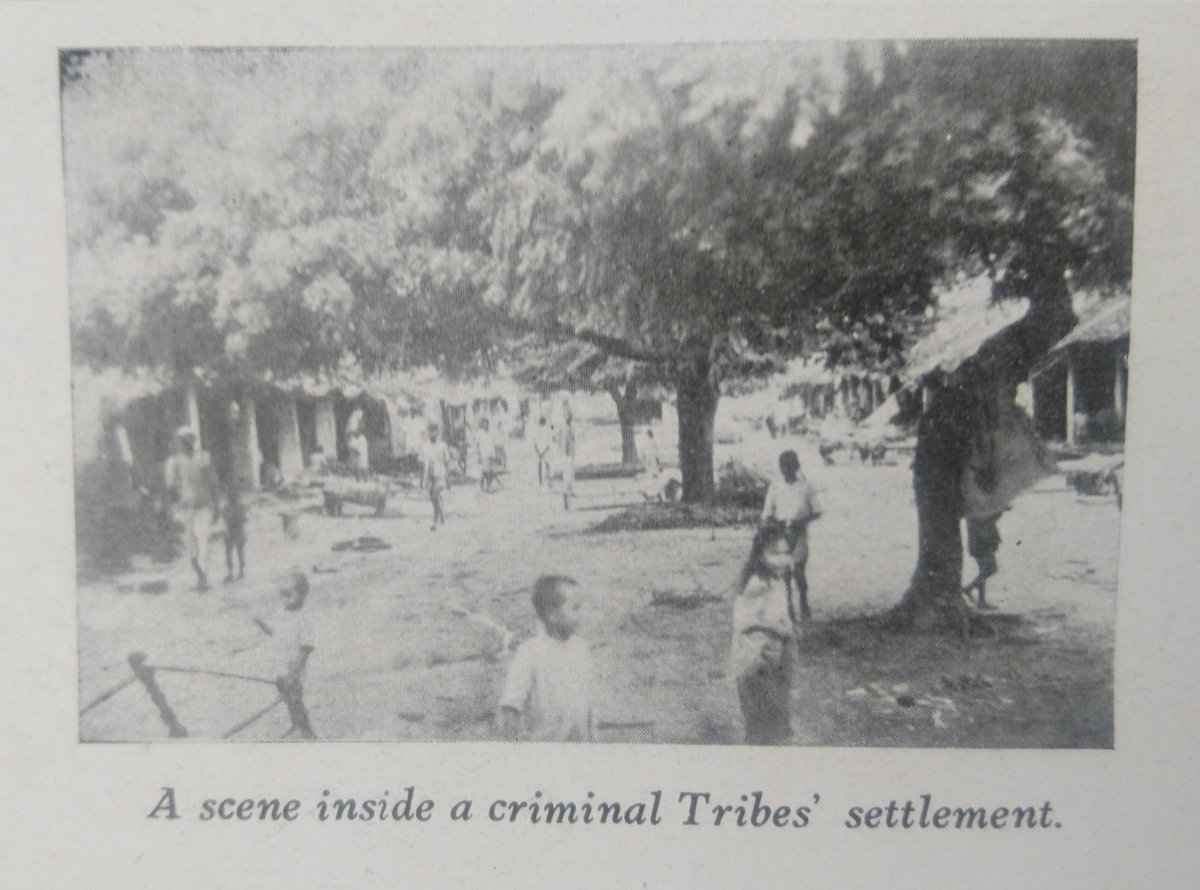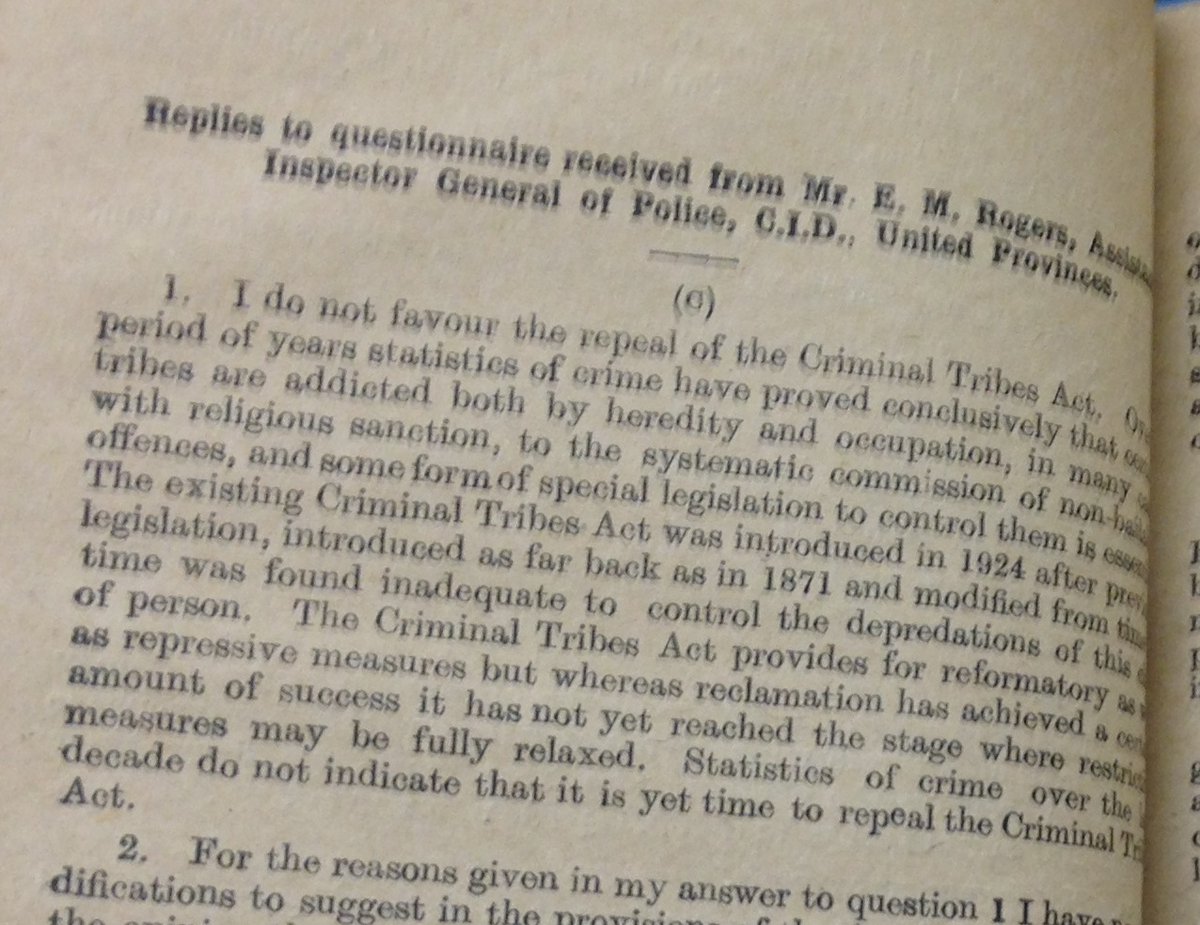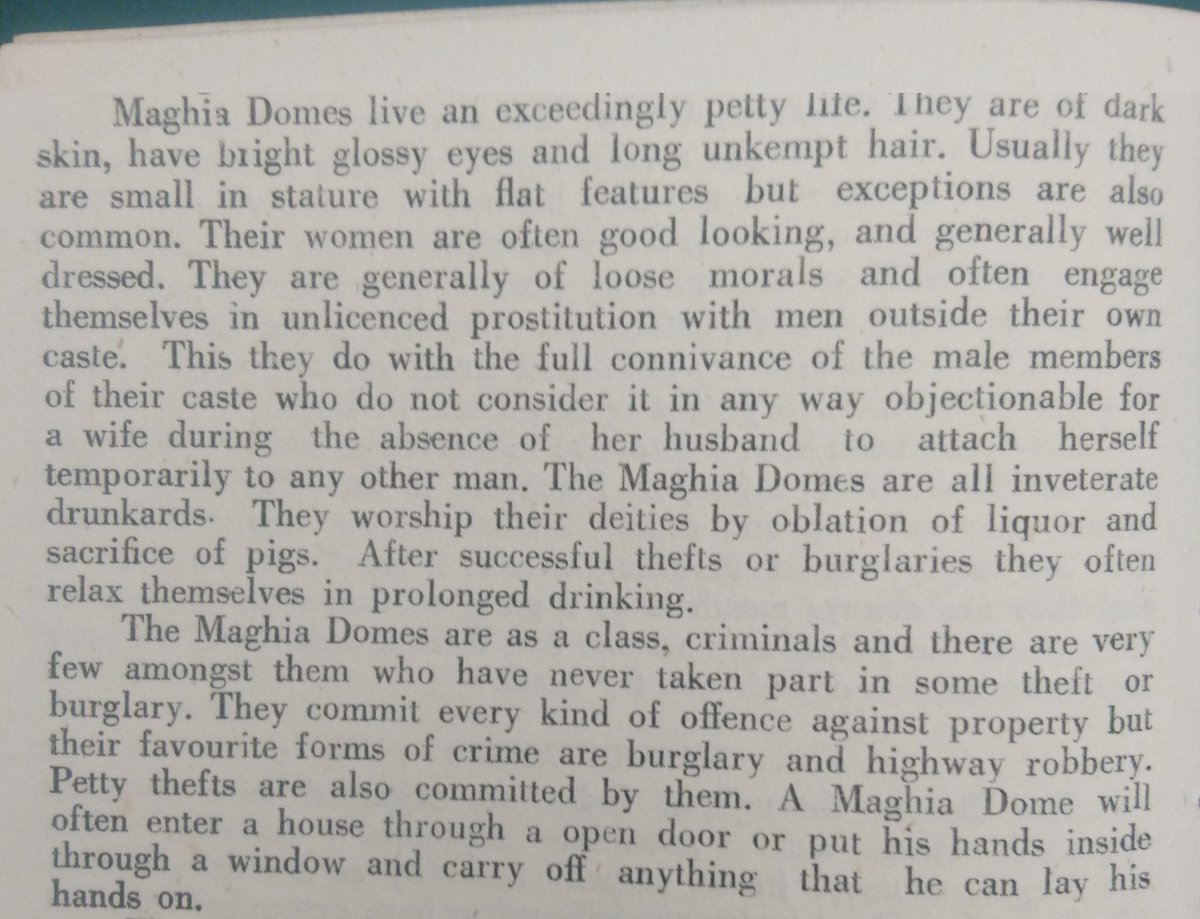What happened to the communities criminalised under the Criminal Tribes Act in India after its repeal? How did everyday experiences of criminalisation change across 1947? Did penal practices change after independence? These are the Qs I’m asking today 1/
Welcome to day 4/week 2 of the @detsolnet curation on the history, legacy and contemporary issues re. the “colonial” Criminal Tribes Act in India/South Asia – tweets by @GandeeSarah 2/
Today’s topic leads on from yesterday& #39;s on the repeal of the CTA between 1947-52 https://tinyurl.com/ucreymc ">https://tinyurl.com/ucreymc&q... Today’s thread highlights some of the lived consequences of this legal process, namely that criminalisation of these communities does not end with the repeal of the CTA 3/
I’m focusing on the 1940s-60s but forms of criminalisation & strategies used in response by former “criminal tribes” (now known as “denotified tribes” or DNTs) continue to present day. @ameyaetc & @glorious_gluten will give a contemporary angle to CTA’s legacy in coming weeks 4/
A problem in answering these Qs is the difficulty in accessing personal narratives from the 1940s/50s, esp. in the state archive. We can find fragments in petitions, newspapers official & reports. Interviews are the most useful for individual experience 5/
It’s therefore much easier to explore everyday forms of criminalisation through actions of the state – but this is, sadly, often a one-sided account. I hope as more research is conducted into this area, more personal narratives & memories will be collected & shared 6/
That said, we can read actions & responses of criminalised people, even if not their experiences, alongside those of the state. From this we can get a good picture of how penal practices changed (or didn’t) on the ground after independence & repeal of CTA 7/
Overall, it’s clear that DNTs, whether under the “habitual offender” laws, other laws or more informally, continued to be subject to police surveillance, harassment & state violence 8/
This was esp. true for DNTs who remained in former “CT” settlements (run by govt, missionaries & reformist organisations in col. period). By the 1940s, these settlements often housed multiple generations of same family who were tied to the site through land/work (photo c 1944) 9/
In 1955, the Bihar Ex-Criminal Tribes Rehabilitation Committee reported that DNTs “living in settlements and camps have not felt the glow of freedom after abrogation of the CTA, as the police continue to ill-treat them” 10/
The “inmates” (a rarely used term in official docs) reported that “roll call is still taken at night, sometimes three to four times”; they needed permits to leave & had movements “watched”; and “whenever there is any dacoity or burglary in the locality they are suspected” 11/
These were highly violent interactions. If DNTs did not report to police, they were “abused and assaulted”. Such a statement downplays & neutralises the varied forms of violence (physical, intimidation, sexual) which, as we know from col. period, occurred at hands of police 12/
More widely, in 1953 a “Criminal Tribes Conference” noted that many DNTs kept “old arrangements” with the police, who had “helped” them commit crimes – this suggests continuation of unequal power dynamics & lack of opportunities 13/
Detention without trial & false allegations were common. In 1963, police searched the house of Nanak & Biro, a Sansi family in Patiala. On finding nothing “incriminating”, they arrested Nanak on suspicion of theft & tortured him in jail 14/
His wife, Biro, filed a petition to the court (sec 491 CrPC). The judge found the arrest unlawful & ordered Nanak’s release. This eg shows that DNTs could use the law to challenge their criminalisation, but still clearly remained vulnerable to the violence of the state 15/
To understand these interactions (v. small fragments of a much wider issue), we need to think about the structures of the col/postcol state. When India became independent, structures of policing didn’t vastly change (even if personnel/numbers did) 16/
HO laws, for example, relied on the same structures of policing & governance as had the CTA – local police, district magistrates, village officials. These officials performed the same actions as prior to 1947/52 17/
It’s also important to note that many of those in the bureaucracy opposed the repeal of the CTA. In UP in 1947, 78% of district magistrates and 83% of police superintendents asked about the CTA opposed its repeal, for eg. E.M. Rogers (apologies for the awful photo!) 18/
There was little questioning of the “criminal” stereotypes of the now denotified communities. Indeed, these remained a key part of postcolonial policing. Like in colonial penal practice, certain communities were officially identified with certain types of crime & behaviours 19/
Police were often trained in the identities of former “CTs”. E.g. Lahiri’s Criminal Classes (India and Pakistan) published in 1949 was intended as a “handy volume” for new recruits. But Lahiri relied on work of colonial officials, incl. WH Sleeman of Thuggee & Dacoity Dept! 20/
These characterisations repeated long-standing colonial & caste prejudices against these socially marginalised groups. For example, the below passage on Maghia Domes from Lahiri: 21/
Even after repeal of CTA, the language of “criminal tribe” remained persuasive. In 1954, Times of India reported that “Police of four Western India States… believe they have uncovered a new criminal tribe which may call for classification and ultimate regulation” 22/
The 500 “Bavrias” – a “criminal fraternity” – were accused of “500 cases of housebreaking and theft”. The “miscreants”, the report went on, “indulge in their nefarious activities during moonless nights” – colonial language & idea of the “criminal tribe” incredibly persistent 23/
With such ingrained ideas & practices, it’s unsurprising prejudice & criminalisation of DNTs today is rife. In 2016 Kiran Bedi tweeted: “Ex-criminal tribes are known to be very cruel. They are hardcore professionals in committing crime. Rarely caught and/or convicted” 24/
DNTs adopt numerous strategies in response. E.g. Budhan Theatre in Chharaganagar in Ahmedabad which uses theatre & arts to highlight police harassment & stigmatisation (amongst other things) https://www.budhantheatre.org/ ">https://www.budhantheatre.org/">... /25
There will be much more on the contemporary angle to the criminalisation of DNTs in coming weeks. This didn’t just include the HO laws or hangovers of the CTA but a wide variety of laws, like anti-begging legislation, wildlife laws, etc which target these communities 26/
Thanks for reading! 27/

 Read on Twitter
Read on Twitter







